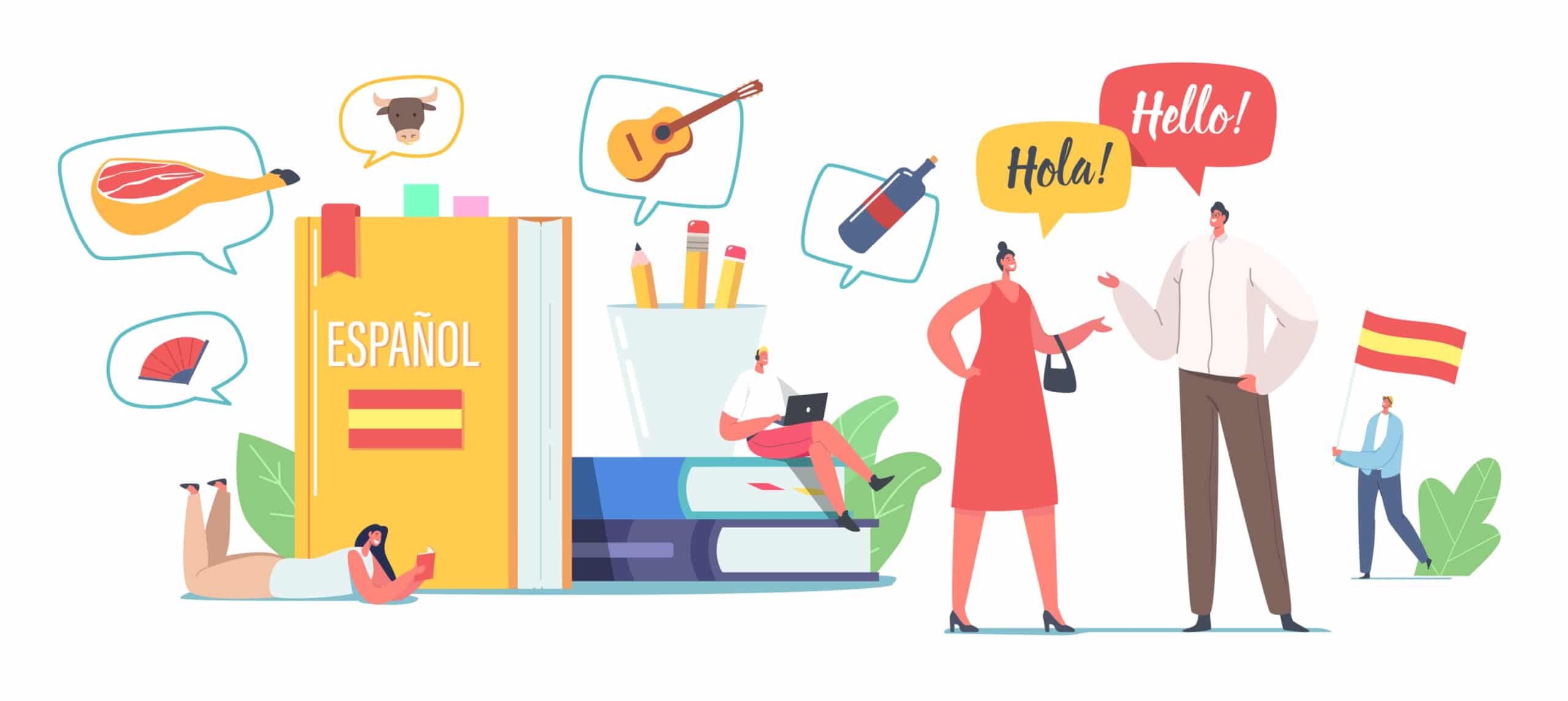1. The Royal Spanish Academy (Real Academia Española, RAE) governs the language
“To cleanse, to fix, to enhance” is the motto that once governed the Real Academia Española (RAE), or the Royal Spanish Academy. The RAE, devised in 1713 and later endorsed by King Philip V, is the leading institution in ensuring Spanish remains a unified language among its nearly 600 million speakers. That’s about 7.6% of the entire global population!
The RAE doesn’t do this work alone, as Spanish has a much farther reach than the idyllic lands of Spain. The Association of Spanish Language Academies is composed of 21 individual academies from Latin America and the Philippines (a country which actually has a really delicate history with language), and in tandem with the RAE, the Spanish language is kept in check with various publishings and regulations.
What’s interesting is that English has no such equivalent. While there are generally accepted rules and style guides, there is no such thing as a Royal English Academy. In one online forum about the English language, one user actually called the world’s lingua franca a “controlled anarchy.”
2. The Spanish dictionary is (technically) smaller than the English counterpart
Another discrepancy between the Spanish and English language is the size of their respective dictionaries.
According to Merriam-Webster themselves, we can say with some confidence that American English contains about 470,000 words. Though not all of them are in current use, and there still remains debate about which entries to include. Some rough estimates say that we can realistically set the mark at about 172,000 words.
Luckily, Spanish speakers have the RAE to do this dirty work of linguistics for them. The most recent publication includes more than 93,000 words, which doesn’t account for the mounds of slang that are used all over the world. With that in mind, some believe this Latin language to have somewhere near a million words in use.
But hey, tranquila. You certainly don’t need that much vocab in your back pocket to reach a conversational level.
3. Slang plays a huge role
You may be wondering how some word count estimates are at one million for the Spanish language. That’s because this language, beautifully diverse in place and setting, is completely full of creative slang and dichos that change from country to country. At times, colloquialisms will even change from city to city.
Slang is so essential to connecting with the culture that even Colombia’s tourism department has created an entire guide to understanding Colombian slang!
For this reason, it’s essential that you learn Spanish from a native speaker. You want to sound like a local, not a dictionary!
Want to brush up on your Mexican slang before an upcoming trip to la playa? Check out these Spanish phrases for vacations in Mexico.
4. Place matters!
When learning Spanish, geography matters for reasons including slang and beyond. Not only does place dictate the vocabulary you might learn, but it also influences the style and mannerisms with which you speak.
Think of the dichotomy that exists between New York City and Los Angeles accents; well, Spanish experiences this too. What makes this fact shocking is that these idiosyncrasies take place among more than 20 countries instead of just one!
From Perú to Paraguay, Spanish may sound (drastically) different depending on where you are. By no means should you restrict yourself to just learning one dialect, but this awareness will certainly make you a more attentive and engaged learner.
5. The Spanish don’t actually have a lisp
Out of all the accents that you’ll come across in español, the one spoken by Spanish people are by far the most distinct.
Note: for this fact, the term “Spanish” refers to those from Spain. People from Spain could also be considered as Hispanic, but not as Latino.
The Spanish accent is so unique because of its charming “lisp”, more precisely called ceceo, which makes itself evident in the “th” pronunciation of the letters s, z and c. There are some variations with this rule, but there’s no doubt about how to pronounce Barthelona.
6. It was influenced by Arabic
Speaking of Spain, let’s time travel back to the Moorish occupation of the Iberian Peninsula. Beginning in the eighth century, the Moors ruled over Spain for about 800 years. One lasting effect of their presence was the introduction of Islam and its language, Arabic.
In addition to hasta and almendra, one example of this fusion is the word ojalá, which translates to something like hopefully.
Ojalá te guste TruFluency!
7. There are also indigenous roots
Similarly, the large indigenous presence of pre-colonial Latin America still shows itself in the language today. Though not as widespread as before, words from native languages like Quechua and Nahuatl are still spoken in their respective regions today.
Ecuadorians may refer to a woman as warmi, while Mexico kept tomate from its Aztec ancestors.
Indigenous languages can be a tool to view the past and to connect with the present culture of many Spanish speaking countries, and should be kept alive as such.
8. Spanish is not a selfish language
Quick grammar lesson. Maybe the quickest, ever? We hope so.
Because of the way that verbs are conjugated to match the subject, it’s really not necessary to begin each sentence about yourself with the subject yo.
Instead of yo hablo or yo limpié, instead try dropping the subject and just saying hablo or limpié. Not only will this sound more genuine, it will also help you communicate more efficiently.
Another example is that of subject order. Try not to put yourself first when listing a group of people. Instead of yo, mi hermana y mi padre try this instead: mi hermana, mi padre y yo.
This may seem a little awkward if you’re a native English speaker, but with practice and guidance you’ll be sounding like a natural in no time.
9. “No bueno” doesn’t actually make sense
This one’s a heartbreaker, right?
Growing up in the United States, this is a common saying that we think comes from our southern neighbors. As it turns out, this isn’t even a phrase in Spanish!
Of course, you would be understood, but you’d definitely raise some eyebrows.
Try out these Spanish phrases instead to achieve the same meaning: qué pena or eso es malo.
10. The number of Spanish speakers is growing rapidly
And you should be among them!
If you find these facts about Spanish as interesting as we do, consider taking classes with TruFluency and unlocking even more dandy tips and tricks from a qualified Spanish tutor. Save 20% off your first month of classes with code TF20!





